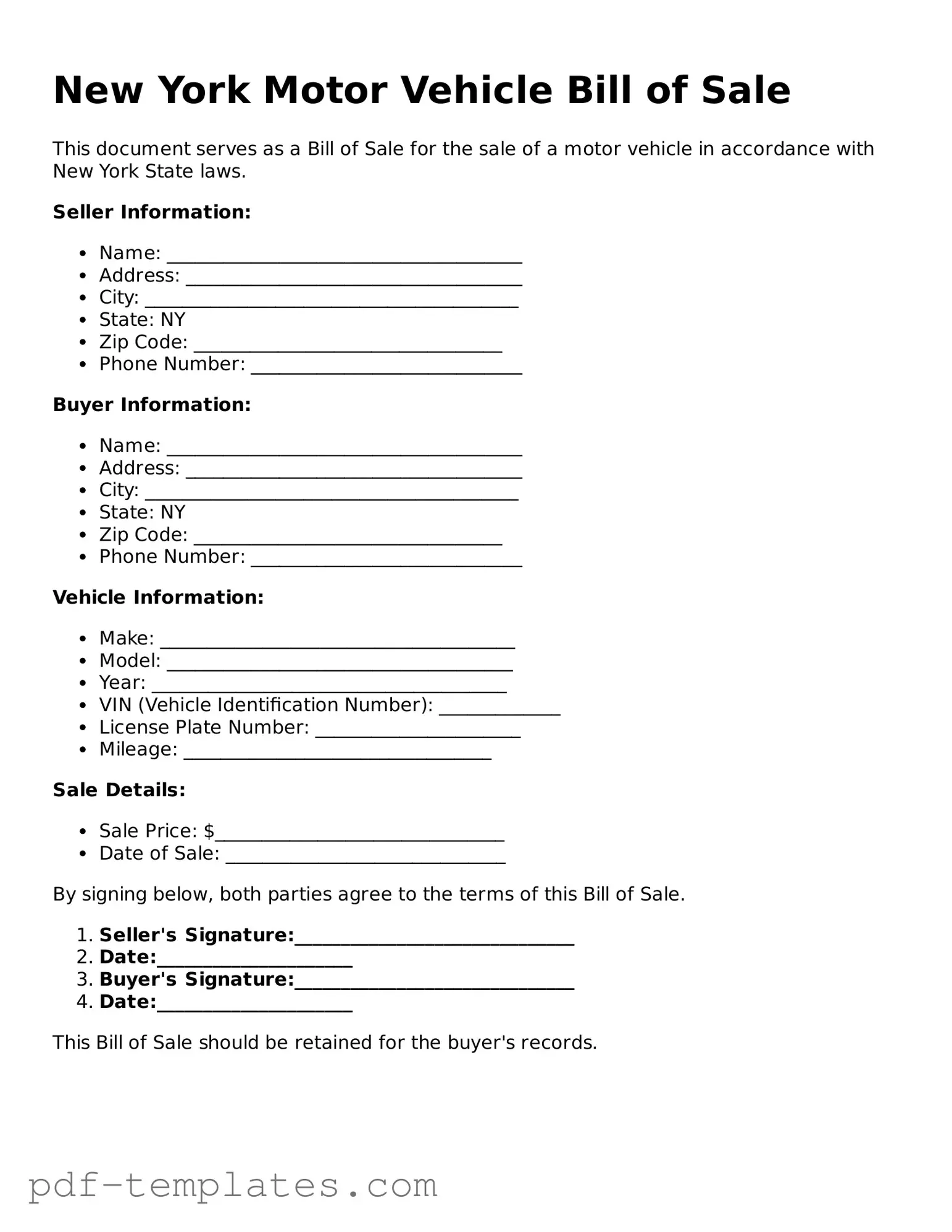The New York Vehicle Registration Application is a document that serves a similar purpose to the Motor Vehicle Bill of Sale. When someone purchases a vehicle, they must register it with the state. This application collects important information about the vehicle, such as its make, model, and Vehicle Identification Number (VIN), and it also requires the buyer's information. Like the Bill of Sale, this document is essential for proving ownership and ensuring that the vehicle is legally registered in the new owner's name.
The Title Transfer form is another document that closely resembles the Motor Vehicle Bill of Sale. When a vehicle is sold, the title must be transferred from the seller to the buyer. This form contains details about the vehicle and both parties involved in the transaction. It serves as proof of ownership and is crucial for the buyer to obtain a new title in their name. Without this transfer, the buyer may face difficulties in proving ownership or registering the vehicle.
The Odometer Disclosure Statement is also similar in function to the Motor Vehicle Bill of Sale. This document is required when a vehicle is sold, as it discloses the vehicle's mileage at the time of sale. Both the seller and the buyer must sign this statement, which helps prevent fraud related to odometer tampering. Like the Bill of Sale, it is an important part of the transaction, ensuring transparency and protecting the interests of both parties.
To facilitate the transaction, it is beneficial to refer to the essential components of the Texas Trailer Bill of Sale framework, ensuring accurate documentation of the sale process. For more detailed guidance, consider checking out this resource: overview of the Trailer Bill of Sale.
Lastly, the Vehicle History Report is another document that complements the Motor Vehicle Bill of Sale. While it does not serve as a legal transfer of ownership, it provides crucial background information about the vehicle's past. This report can reveal whether the vehicle has been in accidents, has a salvage title, or has any outstanding liens. Buyers often request this document before finalizing a purchase, as it helps them make informed decisions and protects them from potential issues down the road.
